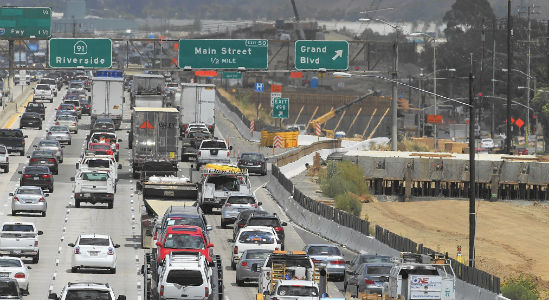TransAnalyst’s Road Volume data report, also known as Midblock Counts or Link Counts, measures the total vehicle volume and vehicle classification, typically over 24-hour, 48-hour and 7-day time periods. This report delivers lane-by-lane classifications and volumes for up to eight lanes of bidirectional traffic and is useful for average daily traffic counts.
If bi-directional traffic and is useful for average daily traffic counts. The volume of vehicles crossing an arbitrary line, some distance from an intersection. Midblock counts may have some classifications but it involves only the classifications of vehicles. Classification categories may be as simple as ‘car’ and ‘truck’ or extend up to the full 12 Austroads classifications. Midblock crosswalks ease crossings to places that people want to go but that are not well served by the existing traffic network.
These pedestrian crossings, which commonly occur at schools, parks, museums, waterfronts, and other destinations, have historically been overlooked or difficult to access, creating unsafe or unpredictable situations for both pedestrians and vehicles. Mid-block pedestrian crossings are marked crosswalks placed between intersections. They look similar to intersection crosswalks but often incorporate several design features to increase safety

Mid-block crossings frequently include pedestrian islands, which provide a safe resort for pedestrians crossing two-way traffic. In one way users can check traffic, cross to the island, and before continuing to cross , check the traffic in the other direction. Yield lines can be set back to require vehicles to stop further away from the intersection. to calm traffic by slowing speeds, and to make pedestrians more visible to drivers Bulb-outs that constrict the roadway can be used. Where traffic volumes are heavy, mid-block crossings can be signalized to further increase safety and soothe. Many people do not go out of their way to cross at constituted intersections. Instead, they choose to cross the street using the most direct route, even if that means crossing several lanes of busy traffic. Mid-block pedestrian crossings decrease random and irregular crossings associated with a high risk of collisions, especially in areas that heavily travel by pedestrians or where block lengths are long.
An engineering study should be completed to determine the need for a mid-block crossing, which integrates roadway width, traffic volume, traffic speed and type, desired lines for pedestrian movement and conterminous land use. Heavily traveled areas that have high incidences of random crossings are good candidates for mid-block crossings, including schools, shopping centers, transit centers, and college campuses. Install a midblock crosswalk where there is a substantial pedestrian desire line. Patronize applications include midblock bus stops, metro stations, parks, plazas, building entrances and midblock passageways. Daylighting in advance of a cross walk makes pedestrians more visible to motorists and cars more visible to pedestrians. This may be effected by restricting parking and/or installing a curb extension. Stop lines at midblock crossings should be set back 20– 50 feet. This ensures that a person crossing the street is visible to the second driver when the first driver is stopped at the stop line.